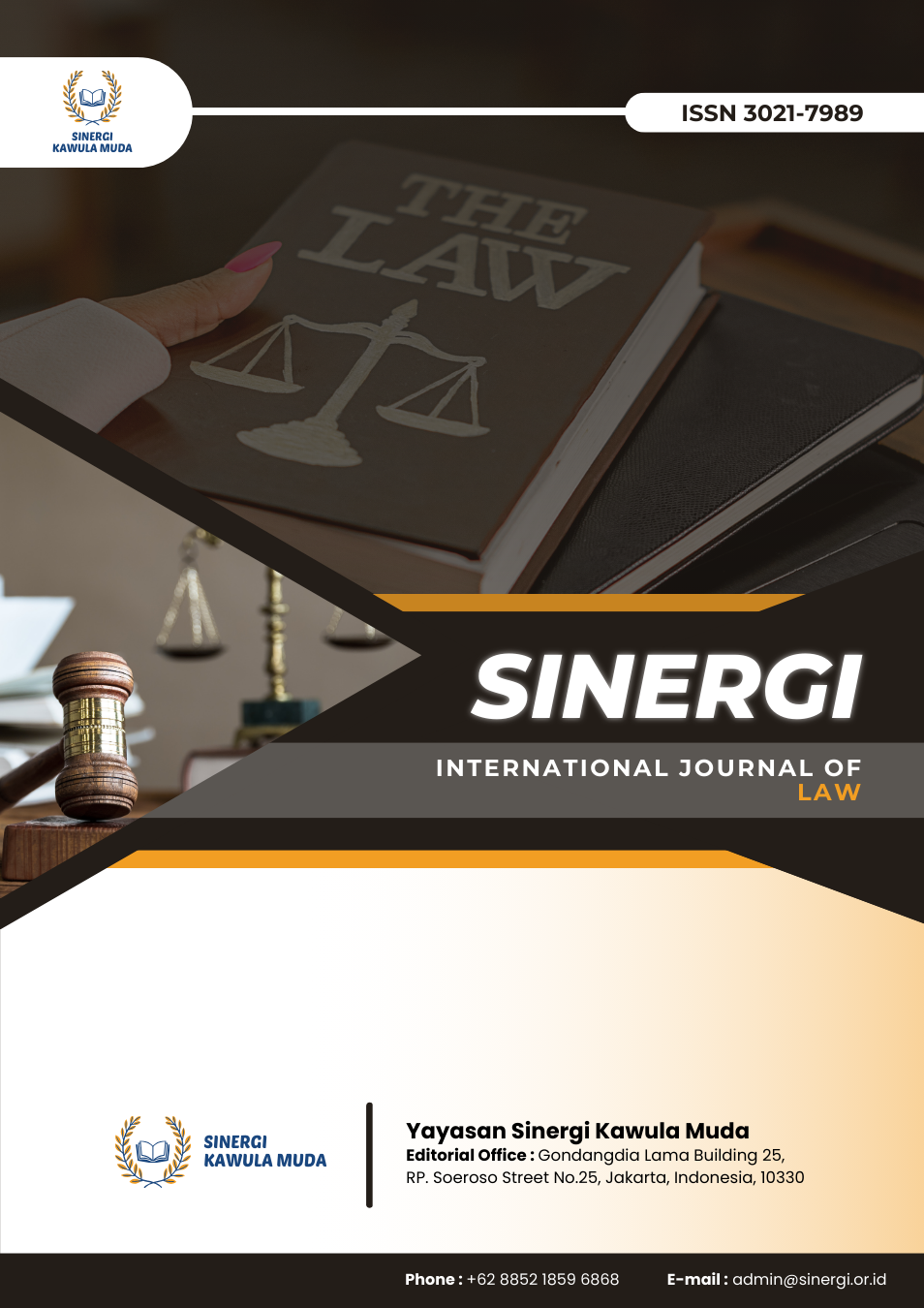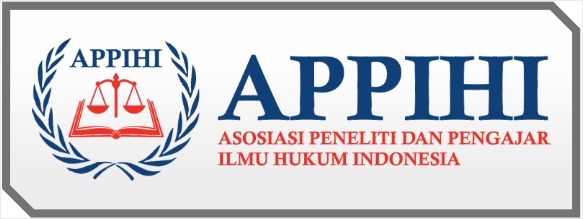Reassessing Human Rights Protection and R2P in Southeast Asia: A Contextual Analysis of ASEAN’s Non-Intervention Doctrine and Institutional Limitations
DOI:
https://doi.org/10.61194/law.v3i1.723Keywords:
Responsibility to Protect, ASEAN, Humanitarian Intervention, Southeast Asia, International Norms, Atrocity Prevention, Institutional ReformAbstract
This study aims to examine the structural gap between ASEAN’s rhetorical commitment to the Responsibility to Protect (R2P) and its practical implementation in Southeast Asia, particularly in addressing large-scale human rights violations. Using a qualitative research design, the study adopts a systematic and contextually grounded literature review method, integrating normative analysis and empirical case studies to assess how R2P is interpreted, contested, and operationalized within ASEAN’s legal-political frameworks. Data were sourced from peer-reviewed publications, legal documents, and institutional reports, and analyzed using contextual analysis and thematic coding. The findings reveal that despite formal support for R2P as articulated in the 2005 World Summit Outcome Document, ASEAN’s operational response to humanitarian crises, such as the Rohingya genocide in Myanmar and the prolonged conflict in Papua, Indonesia, remains limited, symbolic, and diplomatically cautious. The region’s deep-rooted adherence to the principle of non-intervention, along with consensus-based decision-making and institutional inertia, has significantly constrained ASEAN’s ability to fulfill the third pillar of R2P: the international responsibility to act when a state fails to protect its population. This study concludes that effective implementation of R2P in Southeast Asia requires not only normative commitment but also institutional transformation. This includes redefining the principle of non-intervention, strengthening the mandate of ASEAN’s human rights mechanisms such as AICHR, and developing coordinated post-intervention strategies that involve local and regional actors. The significance of this research lies in its contribution to both scholarship and policy. It offers a region-specific, norm localization perspective on R2P, addressing gaps in the existing literature that often overlook Southeast Asia’s unique normative context. At the same time, it provides practical insights for reforming ASEAN’s institutional architecture to enable more responsive, legitimate, and context-sensitive humanitarian action.
References
Acharya, A. (2004). How Ideas Spread: Whose Norms Matter? Norm Localization and Institutional Change in Asian Regionalism. International Organization, 58(02). https://doi.org/10.1017/S0020818304582024 DOI: https://doi.org/10.1017/S0020818304582024
Adams, S. (2019). The Responsibility to Protect and the Fate of the Rohingya. Global Responsibility to Protect, 11(4), 435–450. https://doi.org/10.1163/1875984x-01104005 DOI: https://doi.org/10.1163/1875984X-01104005
Ainley, K. (2017). From Atrocity Crimes to Human Rights: Expanding the Focus of the Responsibility to Protect. Global Responsibility to Protect, 9(3), 243–266. https://doi.org/10.1163/1875984x-00903003 DOI: https://doi.org/10.1163/1875984X-00903003
Alam, J. (2021). Responsibility to Protect in International Criminal Law. 112–134. https://doi.org/10.1093/oso/9780192895189.003.0005 DOI: https://doi.org/10.1093/oso/9780192895189.003.0005
Alexandra, L., & Adhikari, M. (2021). The role of ASEAN in the Myanmar’s post-coup crisis: Breaking the stalemate? (Vol. 43). PeaceRep of The University of Edinburgh. https://peacerep.org/wp-content/uploads/2023/09/Myanmar-Policy-Brief-ASEAN-post-coup-crisis.pdf
Apetroe, A. C. (2017). The Responsibility to Protect. From “Emerging Norm” to a False Promise. A New Challenge to International Security Policy. Studia Universitatis Babeș-Bolyai Studia Europaea, 71–110. https://doi.org/10.24193/subbeuropaea.2017.2.05 DOI: https://doi.org/10.24193/subbeuropaea.2017.2.05
ASEAN. (2008). The Asean charter. Association of Southeast Asian Nations.
ASEAN LOA PDR. (2024). ASEAN LEADERS’ REVIEW AND DECISION ON THE IMPLEMENTATION OF THE FIVE-POINT CONSENSUS.
Assembly, U. N. G. (2005). World Summit Outcome Document (Paragraphs 138–140). https://www.un.org/en/development/desa/population/migration/generalassembly/docs/globalcompact/A_RES_60_1.pdf
Association of Southeast Asian Nations. (2007). Charter of the Association of Southeast Asian Nations, Article 2(2)(e). https://asean.org/wp-content/uploads/images/archive/publications/ASEAN-Charter.pdf
Atuobi, S., & Aning, K. (2009). Responsibility to Protect in Africa: An analysis of the African Union’s Peace and Security architecture. Global Responsibility to Protect, 1(1), 90–113. https://doi.org/10.1163/187598409X405505 DOI: https://doi.org/10.1163/187598409X405505
Averre, D., & Davies, L. (2015). Russia, Humanitarian Intervention and the Responsibility to Protect: The Case of Syria. International Affairs, 91(4), 813–834. https://doi.org/10.1111/1468-2346.12343 DOI: https://doi.org/10.1111/1468-2346.12343
Axworthy, L., & Rock, A. (2009). R2P: A New and Unfinished Agenda. Global Responsibility to Protect, 1(1), 54–69. https://doi.org/10.1163/187598409X405479 DOI: https://doi.org/10.1163/187598409X405479
Beeson, M. (2009). ASEAN’s ways: still fit for purpose? Cambridge Review of International Affairs, 22(3), 333–343. https://doi.org/10.1080/09557570903137776 DOI: https://doi.org/10.1080/09557570903137776
Bellamy, A. J. (2015). The responsibility to protect: a defense. In Oxford scholarship online Political Science (1. ed). Oxford Univ. Press. https://www.gbv.de/dms/bowker/toc/9780198704119.pdf DOI: https://doi.org/10.1093/acprof:oso/9780198704119.001.0001
Brown, G. W., & Bohm, A. (2016). Introducing Jus Ante Bellum as a Cosmopolitan Approach to Humanitarian Intervention. European Journal of International Relations, 22(4), 897–919. https://doi.org/10.1177/1354066115607370 DOI: https://doi.org/10.1177/1354066115607370
Cater, C., & Malone, D. M. (2016). The Origins and Evolution of Responsibility to Protect at the UN. International Relations, 30(3), 278–297. https://doi.org/10.1177/0047117816659586 DOI: https://doi.org/10.1177/0047117816659586
Chandler, D. (2006). From Kosovo to Kabul and beyond: human rights and international intervention (New ed). Pluto Press. https://www.gbv.de/dms/sub-hamburg/500670420.pdf
Davies, M. (2014). An Agreement to Disagree: The ASEAN Human Rights Declaration and the Absence of Regional Identity in Southeast Asia. Journal of Current Southeast Asian Affairs, 33(3), 107–129. https://doi.org/10.1177/186810341403300305 DOI: https://doi.org/10.1177/186810341403300305
Demirhan, N. Ü. (2023). Role of Process Legality in Norm Contestation: Rise and Fall of Human Protection. Alternatives Global Local Political, 48(3), 206–219. https://doi.org/10.1177/03043754231169418 DOI: https://doi.org/10.1177/03043754231169418
Deng, F. M. (1996). Sovereignty as responsibility: conflict management in Africa. Brookings Institution.
Evans, G. (2009). The Responsibility to Protect: Ending Mass Atrocity Crimes Once and for All. Irish Studies in International Affairs, 20(1), 7–13. https://doi.org/10.3318/ISIA.2009.20.7 DOI: https://doi.org/10.1353/isia.2009.0001
Firchow, P. (2014). The Implementation of the Institutional Programme of Collective Reparations in Colombia. Journal of Human Rights Practice, 6(2), 356–375. https://doi.org/10.1093/jhuman/huu003 DOI: https://doi.org/10.1093/jhuman/huu003
Goucha, M., & Crowley, J. (2009). Rethinking Human Security. In International Social Science Journal Monograph Series. John Wiley & Sons, Ltd. DOI: https://doi.org/10.1002/9781444307290
Haacke, J. (2005). ASEAN’s diplomatic and security culture: origins, development and prospects (paperback ed). Routledge.
Hehir, A. (2019). Hollow Norms and the Responsibility to Protect. https://doi.org/10.1007/978-3-319-90536-5 DOI: https://doi.org/10.1007/978-3-319-90536-5
Hindawi, C. P. (2021). Decolonizing the Responsibility to Protect: On Pervasive Eurocentrism, Southern Agency and Struggles Over Universals. Security Dialogue, 53(1), 38–56. https://doi.org/10.1177/09670106211027801 DOI: https://doi.org/10.1177/09670106211027801
Human Right Watch. (2020). ASEAN: Overhaul Regional Response to Rohingya Crisis. https://www.hrw.org/news/2020/06/26/asean-overhaul-regional-response-rohingya-crisis
International Criminal Court. (1998a). Rome Statute of the International Criminal Court, Article 6. https://www.icc-cpi.int/sites/default/files/RS-Eng.pdf
International Criminal Court. (1998b). Rome Statute of the International Criminal Court, Article 7. https://www.icc-cpi.int/sites/default/files/RS-Eng.pdf
Jones, L. (2012). ASEAN, Sovereignty and Intervention in Southeast Asia. CONTEMPORARY SOUTHEAST ASIA, 34(2), 303. https://doi.org/10.1355/cs34-2i DOI: https://doi.org/10.1355/cs34-2i
Kozyrev, V. (2016). Harmonizing ‘Responsibility to Protect’: China’s Vision of a Post-Sovereign World. International Relations, 30(3), 328–345. https://doi.org/10.1177/0047117816659589 DOI: https://doi.org/10.1177/0047117816659589
Mardiyanto, I., & Hidayatulloh, H. (2023). The Responsibility to Protect (R2P) Concept as an Attempt for Protection of Human Rights in International Humanitarian Law Context. Volksgeist Jurnal Ilmu Hukum Dan Konstitusi, 103–118. https://doi.org/10.24090/volksgeist.v6i1.7229 DOI: https://doi.org/10.24090/volksgeist.v6i1.7229
Melling, G. (2018). Beyond Rhetoric? Evaluating the Responsibility to Protect as a Norm of Humanitarian Intervention. Journal on the Use of Force and International Law, 5(1), 78–96. https://doi.org/10.1080/20531702.2018.1448156 DOI: https://doi.org/10.1080/20531702.2018.1448156
Murithi, T. (n.d.). The African Union’s Transition from Non-Intervention to Non-Indifference: An Ad Hoc Approach to the Responsibility to Protect?
Nations, U. (1948). Convention on the Prevention and Punishment of the Crime of Genocide, Article I. https://www.un.org/en/genocideprevention/documents/atrocity-crimes/Doc.1_Convention%20on%20the%20Prevention%20and%20Punishment%20of%20the%20Crime%20of%20Genocide.pdf
Neth, T. C. (2024). ASEAN and the Responsibility to Protect. https://doi.org/10.4324/9781003436799 DOI: https://doi.org/10.4324/9781003436799
Orchard, P. (2016). Regionalizing Protection: Au and Asean Responses to Mass Atrocity Crimes Against Internally Displaced Persons. Global Responsibility to Protect, 8(2–3), 295–326. https://doi.org/10.1163/1875984x-00803011 DOI: https://doi.org/10.1163/1875984X-00803011
O’Shea, E. (2012). Responsibility to Protect (R2P) in Libya: Ghosts of the Past Haunting the Future. International Human Rights Law Review, 1(1), 173–190. https://doi.org/10.1163/22131035-00101010 DOI: https://doi.org/10.1163/22131035-00101010
Pak, H.-C., Son, H.-R., & Jong, S.-K. (2020). Analysis on the Legal Nature of ‘Responsibility to Protect.’ International Studies, 57(3), 279–295. https://doi.org/10.1177/0020881720926767 DOI: https://doi.org/10.1177/0020881720926767
Rodan, G., & Jayasuriya, K. (2009). Capitalist development, regime transitions and new forms of authoritarianism in Asia. The Pacific Review, 22(1), 23–47. https://doi.org/10.1080/09512740802651003 DOI: https://doi.org/10.1080/09512740802651003
Rossi, C. R. (2014). The Responsibility to Protect and the Plenitudinal Mindset of International Humanitarian Law. Journal of International Humanitarian Legal Studies, 5(1–2), 352–395. https://doi.org/10.1163/18781527-00501012 DOI: https://doi.org/10.1163/18781527-00501012
Santoso, D. B., Khanif, A., & Arundhati, G. B. (2024). Settlement of the “Cleaning Operation” Case of the Rohingya Ethnic in Myanmar Based on International Law. Jurnal Suara Hukum, 6(1), 1–30. https://doi.org/10.26740/jsh.v6n1.p1-30 DOI: https://doi.org/10.26740/jsh.v6n1.p1-30
South, A., & independent author and a Research Fellow at Chiang Mai University Thailand., researcher and consultant. (2021). Towards “Emergent Federalism” in Post-coup Myanmar. Contemporary Southeast Asia, 43(3), 439–460. https://doi.org/10.1355/cs43-3a DOI: https://doi.org/10.1355/cs43-3a
Teimouri, H., & Subedi, S. P. (2018). Responsibility to Protect and the International Military Intervention in Libya in International Law: What Went Wrong and What Lessons Could Be Learnt From It? Journal of Conflict and Security Law, 23(1), 3–32. https://doi.org/10.1093/jcsl/kry004 DOI: https://doi.org/10.1093/jcsl/kry004
Thakur, R., & Weiss, T. (2009). R2P: From Idea to Norm—and Action? Global Responsibility to Protect, 1(1), 22–53. https://doi.org/10.1163/187598409X405460 DOI: https://doi.org/10.1163/187598409X405460
Towadi, M. (2017). The Application of Sharia Maqashid on the Protection of the Rights of Minority of Muslim Rohingya in Regional ASEAN (Indonesia-Malaysia). Journal of Indonesian Legal Studies, 2(1), 43–54. https://doi.org/10.15294/jils.v2i01.16637 DOI: https://doi.org/10.15294/jils.v2i01.16637
Union, A. (2000). Constitutive Act of the African Union, Article 4(h). https://au.int/en/treaties/constitutive-act-african-union
United Nations. (1948). Convention on the Prevention and Punishment of the Crime of Genocide, Article I. https://www.un.org/en/genocideprevention/documents/atrocity-crimes/Doc.1_Convention%20on%20the%20Prevention%20and%20Punishment%20of%20the%20Crime%20of%20Genocide.pdf
United Nations. (1966a). International Covenant on Civil and Political Rights, Article 6(1). https://www.ohchr.org/en/instruments-mechanisms/instruments/international-covenant-civil-and-political-rights
United Nations. (1966b). International Covenant on Civil and Political Rights, Article 7. https://www.ohchr.org/en/instruments-mechanisms/instruments/international-covenant-civil-and-political-rights
United Nations. (1966c). International Covenant on Civil and Political Rights, Article 19. https://www.ohchr.org/en/instruments-mechanisms/instruments/international-covenant-civil-and-political-rights
United Nations. (1966d). International Covenant on Civil and Political Rights, Article 21. https://www.ohchr.org/en/instruments-mechanisms/instruments/international-covenant-civil-and-political-rights
United Nations General Assembly. (2005). World Summit Outcome Document (Paragraphs 138–140). https://www.un.org/en/development/desa/population/migration/generalassembly/docs/globalcompact/A_RES_60_1.pdf
Williams, P. D. (2009). The African Union’s Peace Operations: A Comparative Analysis. African Security, 2(2–3), 97–118. https://doi.org/10.1080/19362200903361937 DOI: https://doi.org/10.1080/19362200903361937
Ziegler, C. E. (2016). Critical Perspectives on the Responsibility to Protect: BRICS and Beyond. International Relations, 30(3), DOI: https://doi.org/10.1177/0047117816659533






